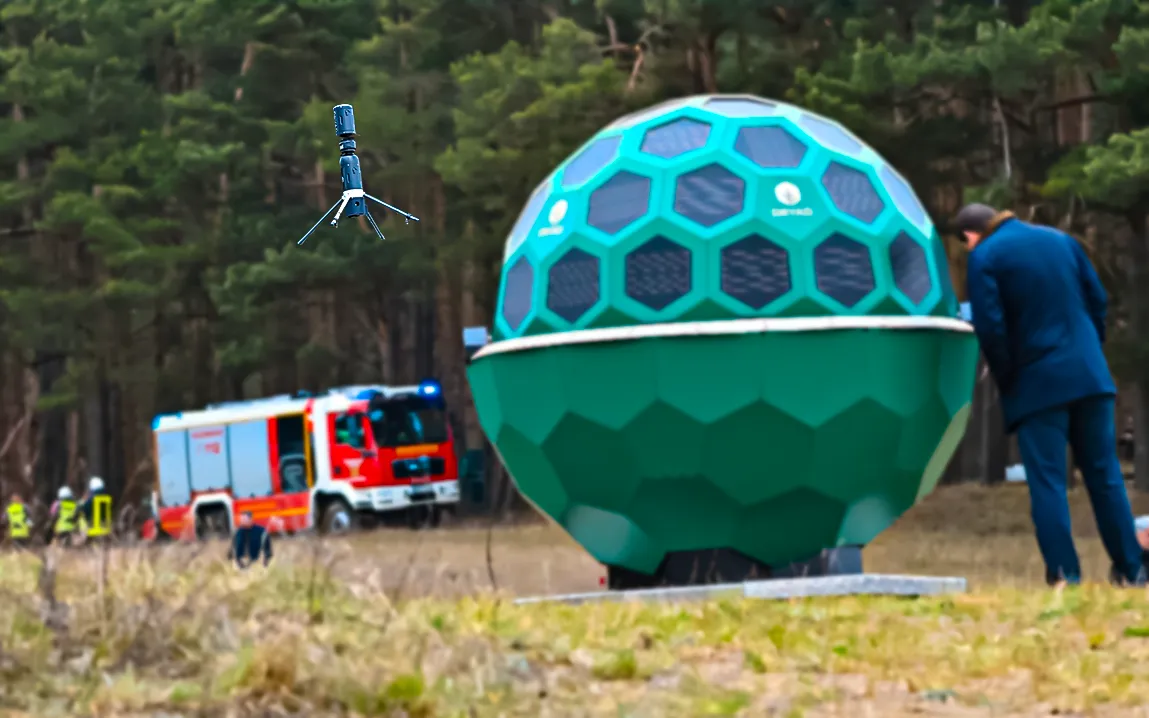As rising global temperatures fuel an increase in devastating wildfires, one German tech company is working on a high-tech solution that could change the way we detect and even extinguish forest fires.
Inside what looks like a solar-powered, giant green golf ball nestled in the German countryside, Dryad Networks has developed an AI-powered drone system designed to catch fires in their earliest moments. It detects and responds to wildfires within 10 minutes.
https://scx1.b-cdn.net/csz/news/800a/2025/dryad-eventually-hopes.jpg
“Fires are spreading much faster and more aggressively than in the past. That also means we have to react more quickly,” said Dryad CEO Carsten Brinkschulte during a demonstration outside Berlin.
A Smarter Way to Fight Fires
Germany, like many parts of Europe, is seeing more frequent and intense wildfires, often due to hotter, drier, and windier conditions linked to climate change. In 2022, for example, a heat wave triggered several fires, including a dangerous blaze on the western edge of Berlin.
At the heart of Dryad’s system is a network of smoke sensors scattered across forests. These sensors detect specific chemicals released during combustion and send an alert to the central platform. From there, the AI-powered drone, stored inside the spherical “hangar,” takes off autonomously, flies in a zig-zag pattern, and identifies the exact location and size of the fire.
The drone’s data gives firefighters a huge advantage: faster, more precise response that could prevent fires from growing out of control.
A Sound-Based Fire Suppression Dream
But detection is only half the plan.
Dryad is also developing a way for the drone to put out small fires itself, using low-frequency sound waves. Instead of carrying heavy water or fire retardants, the drone could one day use a “sonic cannon” to blast fires with sound that disrupts the flame.
“It makes the drone lighter, faster, and more versatile,” Brinkschulte explained. While still experimental, it’s a promising idea that could make firefighting safer and more efficient.
The Path to Deployment
Dryad is one of 30 global teams competing for a multi-million-dollar prize to build a fully autonomous wildfire prevention system. Their drone’s first real-time demo on Thursday had a minor hiccup, a faulty GPS delayed its launch, but the technology is progressing fast.
The drones are expected to hit the market in 2026, with early rollouts likely outside of Europe due to regulatory hurdles. But their greatest potential may lie in what experts call the “wildland-urban interface,” where human civilization meets nature, and fire risks are highest.
“These systems could save lives and property — without putting firefighters in harm’s way,” said wildfire expert Lindon Pronto of the European Forest Institute.
As fires become more extreme, innovations like Dryad’s could mark a turning point in how we prevent climate-related disasters.



